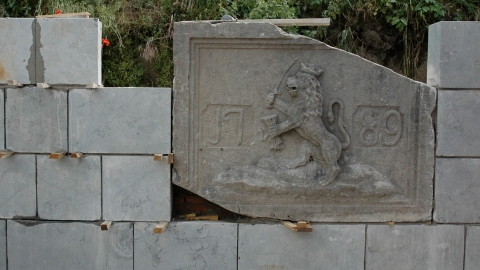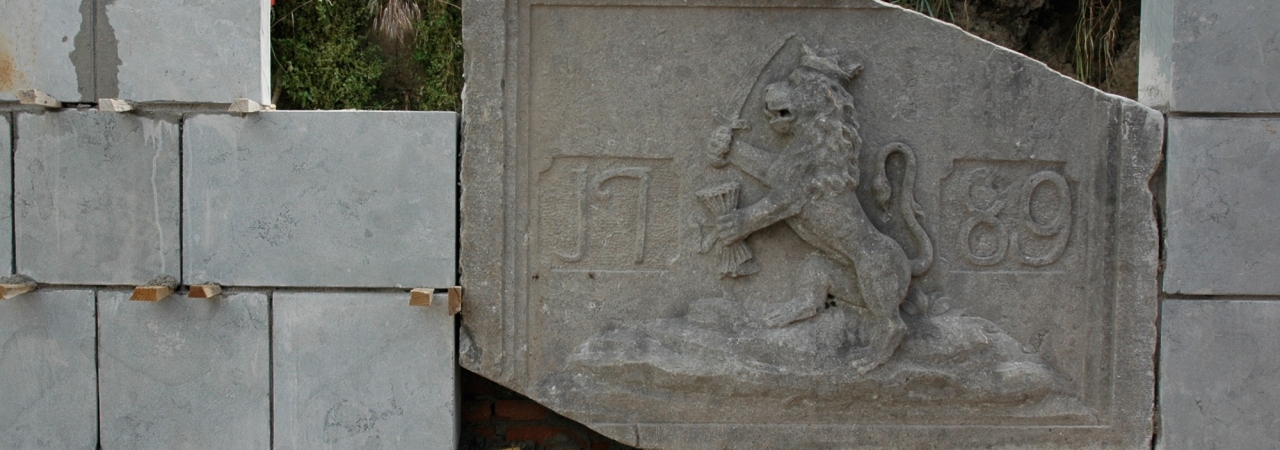Alexander Farnese, the later Duke of Parma, who was sent by the Spanish king to the Netherlands to quell the Revolt, invaded northern Flanders in 1583. In order to block his advance, the rebels opened several dykes, flooding the hinterland (inundations). In 1584, this was the sea dyke along the Honte (now the Western Scheldt) at Campen. Due to tidal action, a large stream emerged: the Hellegat. This sea channel separated the Land of Hulst from the Land of Axel. In 1586, the Braakmandijk between Sas van Gent and Terneuzen was opened. This allowed the Braakman to expand eastwards creating the Axelsche Gat, which ultimately joined the Hellegat. The Land of Axel became an island!
Over the years, the eroding action of the tide created an extensive slib and salt marsh area to the south of the Land of Axel, crisscrossed with streams and channels. This formed a wide no man’s land between the States in the north and the Spaniards in the south.
After Sas van Gent and Hulst definitively fell into the hands of the northern Netherlands in 1644/1645, the polders on the other side of the Axelsche Gat became States territory. The marshland in between formed a perfect water barrier against any attacks from the south.
But the streams silted up, as did the marshland. From the second quarter of the 17th century, land reclamations took place from the south. Midway through the 18th century, the remaining marshlands were so silted up that they no longer constituted an obstacle.
It was decided to totally reclaim the area, leaving open the possibility of flooding the area via the locks (inundate) in the event of a threat of war. Thus the polders to the south of the Land of Axel became part of a water line that extended from the Zwin to Hulst (and from Hulst to the Scheldt).
In 1789, the eastern part of the marshland was the first to have a dyke, marking the end of the Land of Axel’s existence as an island. The western part followed in 1790, which was dammed by the Sasdijk from the Braakman. At the ends of the Sasdijk, outlet and inundation locks were created: in the north the Axelsche Sassing, which also allowed ships to pass through. In the south, the locks at Zwartenhoek. In order to guard the strategically crucial locks, batteries were constructed on the banks. Batteries are installation sites for guns (canons). In this case, they were high, wide embankments which were open from the back. The canons were placed behind a parapet with holes for shooting.
In 1794 when the French invaded the Southern Netherlands (as well as Staats-Vlaanderen, which is now Zeeuws-Vlaanderen), the water line barely worked and there were too few troops to defend the line. In the French Period, the inundation locks and associated batteries fell into disrepair.
Little has remained of the Zwartenhoek battery apart from a few mounds in a field. In 2010, part of the battery was reconstructed in the framework of the Interreg IV-A-project “Forts and Lines in Border-wide Perspective” and has since been part of the “Groene Knoop” conservation area.



